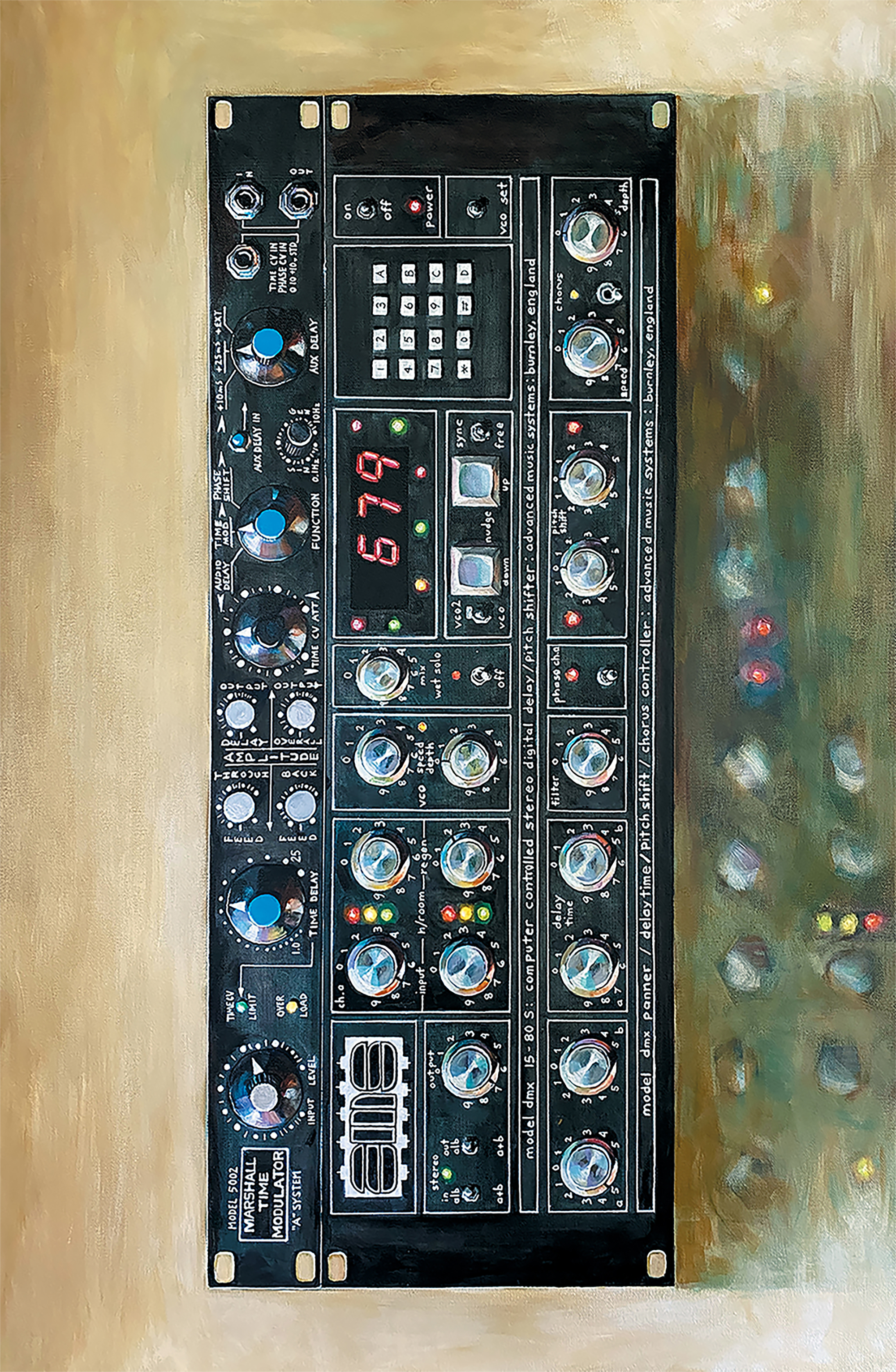In 2020, I had the pleasure of reviewing the Hazelrigg Industries VDI [Tape Op #48]; Earlier this year, Hazelrigg Industries released their latest creation; the 4DI. In the three years since I demoed the single channel VDI, I’m now working out of a very different studio in a much more dialed-in acoustic environment. I’ve also been hustling a lot of live band tracking sessions, so a multi-channel DI seemed like a great tool to have around. I was also genuinely curious if our little VDI reunion would confirm, or deny, how I initially felt about that DI while listening in this new space. We set it up, and I opted to see what the VDI’s bigger brother was all about.
All Hazelrigg Industries DI boxes are based on the D.W. Fearn VT-I/F, and the 4DI, you guessed it, features four channels of tube-driven glory housed in a two-space, rack-mountable box. The 4DI conveniently has 1/4-inch instrument inputs on both the front and back, so whether it's racked up or floating around one can plug into it from either side. Also located on the back of the box are 1/4-inch pass-through jacks to feed through to an amp, as well as the mic-level XLR outputs. My favorite part of this box are the Neutrik locking jacks on the front inputs. In almost every tracking session someone steps on an instrument cable and pulls it half-way out of a jack – problem solved. I also love that the ground lifts are on the front panel, not the back. Like all Hazelrigg gear, the 4DI is built tough as nails, and when compared to some of the DIs of this ilk and price range, this box can handle much more wear and tear. If I was the FOH [front of house] type, I wouldn't hesitate to pop it into my live rig and take it on the road.
Over the course of about a month, I had the 4DI primarily live in our tracking room, and we used it as a front end on bass, electric guitar, and stereo keyboards. It was nice having a centralized system with one power supply instead of multiple DI boxes and cabling to keep track of. I was also able to record stereo sources into the 4DI, which I couldn’t do with the single channel VDI, so I got to experiment on some new sources this time.
The sound of the 4DI held up as brilliantly as I remembered; fat and colorful, but not distorted or smeared. One can’t go wrong loading up bass guitar tracks with rich tube harmonics, and the ground lifts made dealing with noisy bass amps a non-issue. I enjoyed having the option to chain into the other channels on the 4DI so we could get pre- and post-effects DIs going to the DAW while still being able to utilize an amplifier. I had great success using it as a front end for adding texture and dimension to direct keyboards before hitting the computer.
Normally, I would patch a piece of outboard after the preamp for extra color but here I could get it right off the DI. I’ve also been lucky enough to have also heard the Hazelrigg VNE [Tape Op #147] and VLC [#117] on separate occasions; each having a distinct sonic color to them. If you are interested in hearing how Hazelrigg gear bends audio before taking the plunge into one of the pricier boxes, either of these DI boxes would be a great entry point into their sound. Alternatively, if you already have a Hazelrigg in your rack and merely want more of the flavor as a front end, this would still be a great option. The 4DI is not cheap, but considering the number of channels, military-grade build, and feature set, it is a great investment and would make an excellent tracking room or live rig centerpiece.




_disp_horizontal_bw.jpg)